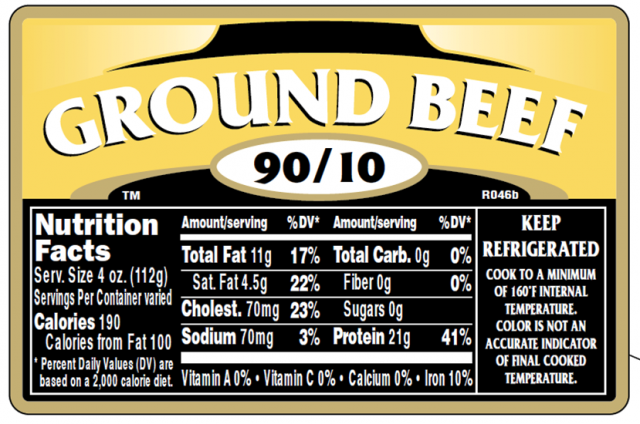 Finally the United States Department of Agriculture will do its job! Starting today, new nutrition labels will appear on raw meat and poultry.
Finally the United States Department of Agriculture will do its job! Starting today, new nutrition labels will appear on raw meat and poultry.
A new USDA rule says nutrition information must be available for most ground meat and ground poultry, and for popular cuts of meat and poultry.
Before now, the USDA required nutrition labels only on meat and poultry with added ingredients, such as marinade or stuffing, says Elisabeth Hagen, MD, USDA under secretary for food safety.
“It is not that the labels are different, it’s that you will be seeing them on products you haven’t seen them on before,” Hagen tells WebMD. “We think this is important for consumers because they often are building their entire meal around this protein component they are going to put on the plate.”
In a nutshell, the new rule says:
- Ground meat and ground poultry must carry a nutrition label.
- If the ground meat/poultry product shows the percentage of lean meat, it must also show the percentage of fat. For example, if a ground product says it’s 80% lean, it must also say it’s 20% fat.
- Small businesses that grind meat and poultry are exempt from the rule, provided they offer lean and fat information and do not make any other nutritional claims on the package. The USDA estimates that 95% of grinders are small businesses, providing about 25% of such packages.
- Nutrition information for 40 popular cuts of meat and poultry — beef porterhouse steaks, chicken breasts, and pork chops, for example — will appear either on individual packages or on charts posted near the point of sale.
- Nutrition information on non-ground cuts of beef and poultry will be based on average nutritional values for that cut.
- Nutrition facts panels will include the number of calories and the grams of total fat and saturated fat a product contains.
- Nutrition labels do not have to include the grams of trans fat in a product. The USDA estimates that 75% to 80% of nutrition labels voluntarily list trans fat.
“We don’t want to tell people what to decide,” Hagen says. “It is a matter of going into the store and thinking, ‘How many calories will I consume today?’ ‘What is my target for fat grams?’ ‘How does this purchase fit into my own and my family’s diet?'”
With the new information, Hagen says, a shopper who decides to indulge in a cut of meat that “isn’t as high on the healthy list as some other things” can balance this choice with better choices at other meals.
“So now you can actually look and say, ‘OK, if I choose the ground turkey over the ground beef, or the porterhouse steak instead of going with a pork chop or some lean chicken breast, what is that going to mean to me in terms of the choices I make today and the choices I make tomorrow?'” Hagen says.
The new rule is expected to add less than a half penny a pound to the cost of meat and poultry products.
“I don’t think consumers are going to feel this at all in their wallets,” Hagen says.
As is evident from this label example, meat labeling raises issues related to calories, fat, saturated fat, and serving size.

Look at how confusing the previous labels were when it came to meat.
- Calories: this particular ground meat contains 21 grams of protein and 11 grams of fat. These provide 190 calories, per serving.
- Fat: Fat is the major determinant of calories (9 per gram as compared to 4 per gram for protein). That is why more than 50% of the calories in this ground beef come from fat.
- Saturated fat: The 4.5 grams of saturated fat in this meat account for 22% of the Daily Value, a lot or a little depending on what else you eat.
- Serving size: The serving size is a quite reasonable 4 ounces (like a quarter-pounder). It represents, however, a substantial increase over previous USDA serving size suggestions. Since 1958, the USDA has considered a meat serving to include just 2-to-3 ounces.






